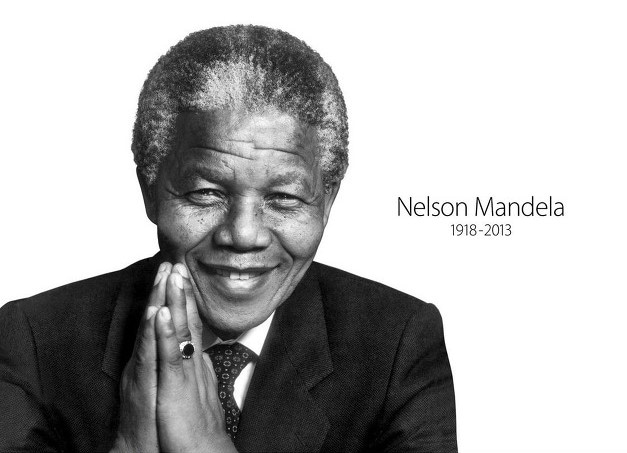
Nelson Mandela's "Long Walk to Freedom" is an autobiography that chronicles the remarkable life of this iconic South African leader. Born on July 18, 1918, Mandela dedicated his life to fighting against apartheid, a system of racial segregation and discrimination in South Africa. This work is a reflection of his struggles, sacrifices, and eventual triumph in the pursuit of justice and equality.
In this article
Long Walk to Freedom Summary
The story begins with Mandela's early years, providing insights into his childhood, upbringing, and the influence of his tribal heritage. Growing up, he developed a keen awareness of racial inequalities and injustices, laying the foundation for his future fight against apartheid.
As Mandela's involvement in politics intensified, he joined the African National Congress (ANC), a political organization advocating for the rights of black South Africans. The ANC's nonviolent protests against apartheid policies faced brutal repression from the government, leading Mandela and other activists to adopt a more militant approach in their quest for justice.
In 1963, Mandela was arrested and accused of sabotage and conspiracy against the state. His trial resulted in a life sentence, and he was sent to the infamous Robben Island prison, where he would spend the next 27 years of his life.
While in prison, Mandela became a symbol of hope and resistance for oppressed South Africans and garnered international attention and support. His refusal to back down from his principles and his commitment to reconciliation even in the face of adversity inspired millions around the world.
In 1990, after intense domestic and international pressure, the South African government finally released Mandela from prison. He embraced the opportunity for peaceful negotiations with the apartheid regime, and these efforts culminated in the dismantling of apartheid and the birth of a democratic South Africa.
In 1994, the first fully democratic elections were held in South Africa, and Nelson Mandela was elected as the country's president. This historic moment marked the end of apartheid and the beginning of a new era of equality and inclusivity.
Throughout "Long Walk to Freedom," Mandela emphasizes the importance of forgiveness and reconciliation as the cornerstone for building a united and harmonious nation. Despite enduring immense personal suffering, he chose to extend a hand of friendship to those who once oppressed him and his people, striving to create a truly inclusive society.
The autobiography also underscores Mandela's leadership qualities, highlighting his ability to unite people from diverse backgrounds and inspire them to work together for a common cause. His leadership style was characterized by humility, integrity, and unwavering dedication to the well-being of his fellow citizens.
Long Walk to Freedom Theme
The central theme of "Long Walk to Freedom" revolves around the relentless pursuit of freedom, justice, and equality. Nelson Mandela's life is a testament to the power of perseverance and the determination to challenge oppressive systems. The autobiography portrays the struggles of an individual against the entire apartheid regime, emphasizing the importance of standing up for one's principles and beliefs.
One of the essential elements of the book is the idea of forgiveness and reconciliation. Despite years of suffering and injustice, Mandela chose to seek understanding and harmony with his former adversaries. He realized that true freedom could only be achieved by transcending the cycle of hatred and revenge, and instead, fostering unity and cooperation among all racial and ethnic groups in South Africa.
Another significant theme in the book is leadership. Mandela's leadership style was rooted in humility, empathy, and inclusivity. He prioritized the needs of his people above personal ambitions and demonstrated the importance of leading by example. His ability to unite diverse factions and maintain a sense of purpose amid challenges exemplifies the qualities of an exceptional leader.
Moreover, "Long Walk to Freedom" sheds light on the impact of international solidarity and the global anti-apartheid movement. The book narrates how the world's attention and support played a crucial role in putting pressure on the South African government and ultimately contributing to the dismantling of apartheid.
The autobiography serves as an inspiration not only for South Africans but for people around the world, encouraging them to persevere in their fight for justice and freedom. It demonstrates that even in the darkest of times, hope, courage, and determination can lead to transformative change.
Conclusion
In conclusion, "Long Walk to Freedom" is a captivating memoir that provides deep insights into Nelson Mandela's life and his fight against apartheid. It is a testament to the power of resilience, forgiveness, and the pursuit of justice. Mandela's story serves as an inspiration to all, reminding us of the importance of standing up against injustice, even in the face of seemingly insurmountable odds.
To fully grasp the essence of Mandela's journey and create comprehensive book notes, I highly recommend using EdrawMind. This powerful mind-mapping tool allows you to organize thoughts, highlight key points, and create visually appealing summaries. Whether you are a student, researcher, or someone looking to delve deeper into "Long Walk to Freedom," Edrawmind can be a valuable resource.
Uncover the essence of "Long Walk to Freedom" and embark on a transformative journey with Nelson Mandela. Let his story inspire you to fight for justice, equality, and a better world.





 below.
below.  below.
below. 